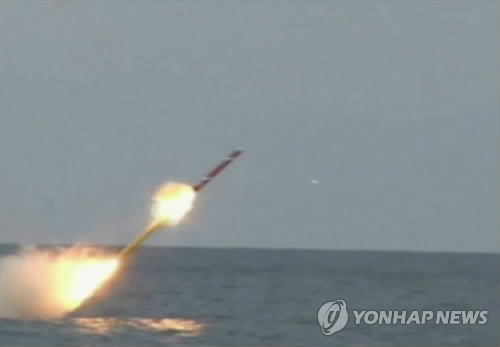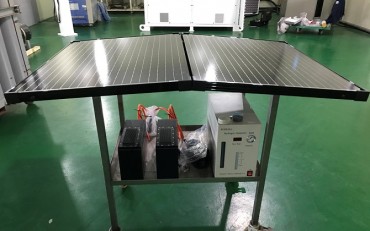
North Korea launched a long-range rocket, apparently sending what it claims is a satellite into orbit on Sunday, but South Korea and the U.S. denounced it as a long-range missile test that squarely challenges the international community. (Image : Yonhap)
SEOUL, Feb. 7 (Yonhap) – North Korea launched a long-range rocket, apparently sending what it claims is a satellite into orbit on Sunday, but South Korea and the U.S. denounced it as a long-range missile test that squarely challenges the international community.
“It’s presumed that the projectile has entered into orbit,” a military official said, indicating that the North successfully launched the long-range rocket.
The official, however, qualified the assessment by saying that additional analysis is needed to confirm whether the satellite is operating normally in its orbit.
Earlier in the day, South Korea’s Aegis destroyer’s radar detected the rocket lifting off at 9:30 a.m. from North Korea’s northwest Dongchang-ri launch site and concluded that it was a long-range rocket after studying the trajectory.
Upon the launch on the west coast, the rocket flew southward, dropping its first stage into the Yellow Sea off the Korean Peninsula at 9:32 a.m. The first stage exploded in midair and splashed down in some 270 pieces, according to the Joint Chiefs of Staff.
Four minutes later, the missile disappeared from the military’s surveillance radar at about the same time it shed its fairing southwest of South Korea’s Jeju Island, the JCS said.
The route matches what the North previously told United Nations agencies.
“South Korea and the U.S. are jointly studying whether the disappearance means the launch was a failure or there were other technical issues,” a JCS official said.
The allies are also examining the location where the second stage of the missile may have fallen, the official said.
Officials said the missile passed through the skies of South Korea without creating any damage.
Three hours after the initial launch, North Korea announced through an official broadcast that it has succeeded in placing the “Kwangmyongsong-4″ satellite into orbit.
But, the outside world views it as a cover for testing an intercontinental ballistic missile, which the North is prohibited from under a series of relevant United Nations Security Council resolutions.
Initially, the North proclaimed the rocket would be fired sometime between Feb. 8 and 25, but it advanced the launch window to Feb. 7-14 on Saturday.
It is the sixth long-range missile test by the North in its program to develop nuclear-loaded intercontinental ballistic missiles.
The missile fired on Sunday is believed to have a range of more than 10,000 kilometers, which could reach the mainland U.S.
The North’s rocket launch came weeks after it conducted a fourth nuclear test on Jan. 6, prompting the UNSC to work on a fresh resolution for tougher sanctions against the North.
In an emergency National Security Council meeting, President Park Geun-hye condemned the launch as an “unacceptable provocation” and called on the UNSC to quickly slap strong sanctions on the North.
Defense Minister Han Min-koo also convened an emergency meeting with U.S. Ambassador to Seoul Mark Lippert and United States Forces Korea Commander Gen. Curtis Scaparrotti at the Defense Ministry.
“Before, during and immediately after the launch occurred, our two governments have been in close coordination … and the way forward on this is close cooperation across all instruments on foreign policy and national policy,” Lippert said in the opening of the meeting.
Scaparrotti also assured in the opening “that kind of coordination will continue to ensure the appropriate security and defense of the Republic of Korea and the region.”
(Yonhap)






